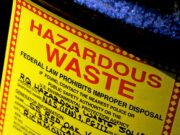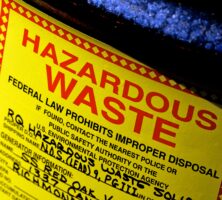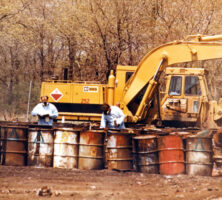Subtitle C of the Resource Conservation and Recovery Act (RCRA) is a comprehensive plan developed to manage hazardous waste from its point of origin through disposal. Georgia is home to numerous producers of hazardous and biohazardous materials, including power-generating facilities, manufacturing businesses, hospitals, and some government agencies. Industries and government institutions in Georgia that produce or store hazardous wastes are regulated through the Hazardous Waste Management Branch of the Environmental Protection Division, a part of the Georgia Department of Natural Resources.
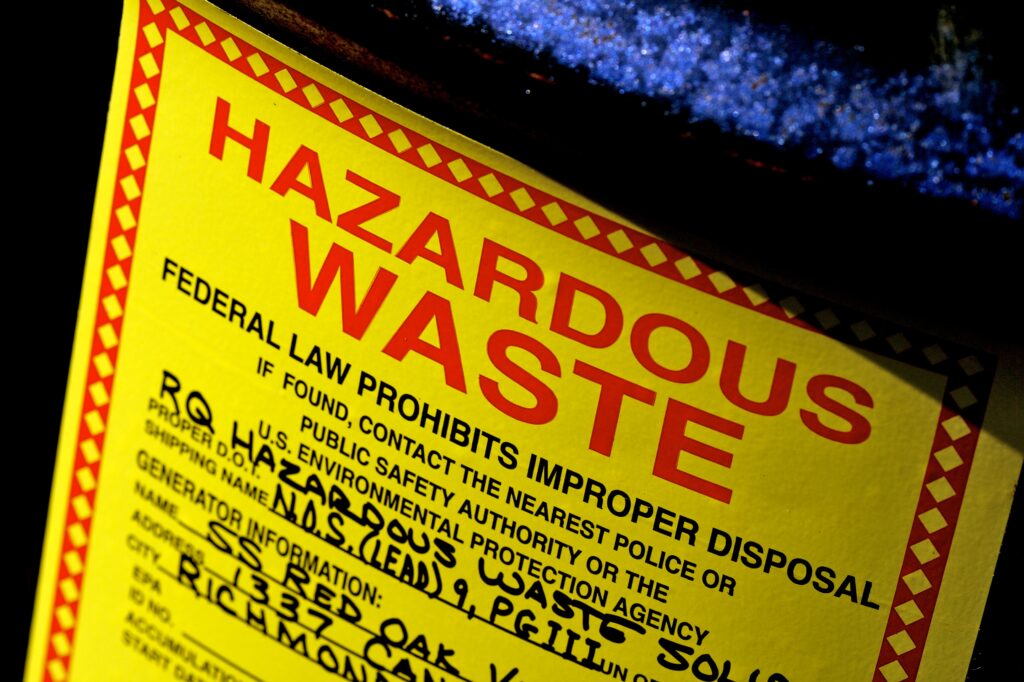
Photograph by Jeremy Brooks
In 2007 nearly 47 million tons of hazardous waste were produced in the United States by more than 16,000 generators. Numerous problems, including the contamination of groundwater that millions of people use for drinking water, arise from the negligent treatment of such waste. In addition, poorly managed hazardous waste can contaminate surface waters, including rivers, lakes, and streams, and potentially cause significant harm or death to plants and animals. Surface-water contamination poses further risk to humans who swim in, drink, or eat products from the affected waters.
Provisions of RCRA Subtitle C
Subtitle C provides guidelines and laws for the proper management of hazardous materials to ensure the protection of human health and the environment. The guidelines include steps for identifying hazardous waste, provisions for recycling, and methods of proper disposal for such universal wastes as batteries, lightbulbs, pesticides, and mercury-containing equipment. In addition, Subtitle C contains regulations that provide guidance and management standards for individuals and facilities who generate, transport, treat, store, and dispose of hazardous waste in the United States.
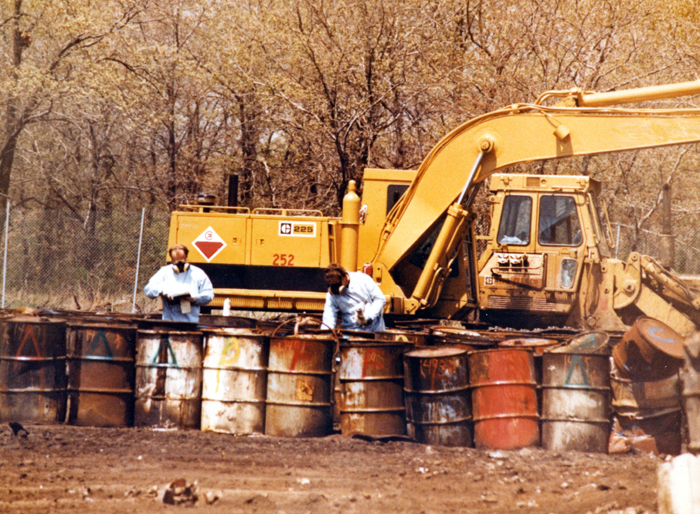
Courtesy of U.S. Geological Survey. Photograph by S. C. Delaney
Subtitle C also provides for the strict regulation of waste disposal in landfills or by combustion, and it outlines the permit process for facilities that treat, store, and dispose of hazardous waste. The legislation also provides a plan for the cleanup of spills and other environmental contamination. The U.S. Environmental Protection Agency (EPA) enforces the provisions of Subtitle C or authorizes state governments to administer various parts of the program in order to make enforcement more efficient.
Waste Identification
In order for a waste to be regulated under Subtitle C, a series of questions must be answered using the guidelines spelled out in the RCRA manual. For a material to be regulated as a hazardous waste under Subtitle C, it must be a solid waste and not meet any of the exclusions stated in the RCRA guidelines. Such exclusions include waste generated in raw material, laboratory samples, and dredged material regulated under either the Marine Protection Research and Sanctuaries Act (1972) or the Clean Water Act (1972). Many of these excluded wastes are reclaimed and reused in the same facility for further processing.
A hazardous solid waste is defined as a material that has been discarded, poses a threat to human health or the environment, has been used as military weaponry (including guns and bombs), or is recycled. Once the material is classified as a solid waste, the next step is to evaluate it as a “listed waste.” Listed wastes are either by-products of industrial processes or are unused pure chemical products and formulations. Because these substances are dangerous enough to warrant full Subtitle C regulation based solely on their origin, any substance fitting the description of a listed waste is considered to be hazardous.
Other materials are classified as “characteristic wastes,” which have measurable properties indicating that the material poses enough of a threat to be classified as hazardous. These properties include ignitibility, or the ability to cause fire immediately; corrosivity, the ability to dissolve flesh, metal, or other materials; reactivity, the propensity to explode or undergo violent reactions, or to release toxic gases or fumes; and toxicity, the ability to leach poisons into underground water and other systems in the environment when disposed of on land.
Subtitle C in Georgia
In 2007 a total of 326 different generators produced 102,636 tons of hazardous waste in Georgia. Most of this waste came from manufacturing industries, particularly those that produce basic chemicals, clothing, cleaning supplies, paints, and pharmaceuticals. The top five hazardous waste generators in Georgia that year were the NutraSweet Company in Augusta (27,483 tons), Chemical Products Corporation in Cartersville (15,046 tons), Scovill Fasteners Inc. in Clarkesville (6,608 tons), International Flavors and Fragrances in Augusta (2,890 tons), and DSM Chemicals of North America Inc. in Augusta (2,867 tons).
Of all the hazardous materials produced in Georgia, more than 76 percent are classified as characteristic, with the remaining identified either as listed or as both classified and listed. In 2007 the most-reported hazardous wastes in Georgia were ignitable wastes, corrosive wastes, nonhalogenated solvents, chromium, lead, methyl ethyl ketone, cadmium, benzene, and equipment cleaning solvents.


